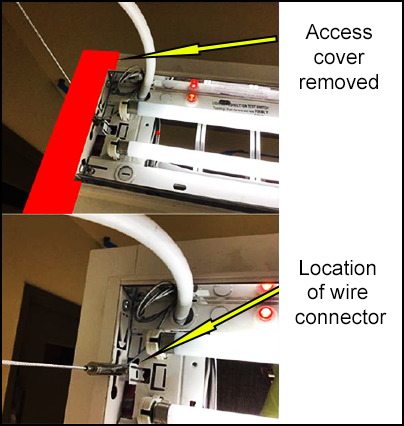-
What happened?
A worker was performing checks on an overhead light fixture.
The worker removed the end cap of the frame on the light fixture and moved the wires to have better access/view.
The live wire came out of the push-in-wire style connector and touched the worker’s left thumb and index finger.
The worker sustained an electric shock of 277 volts and burns to his hand.

-
Why did it happen?
The exposure to energised wires was not identified in the pre-job planning.
The job safety analysis (JSA) for the job was outdated and did not have appropriate approval.
The job was not stopped and checked when conditions changed (moving live wires).
The worker was not wearing the correct personal protective equipment (PPE) – voltage rated gloves.

-
What did they learn?
When planning work, all task hazards and appropriate controls should be identified.
JSA and work permits should be reviewed and approved before starting work.
All exposed electrical wires should be treated as ‘live’ until confirmed otherwise.

-
Ask yourself or your crew
How could something like this happen here?
Do you have appropriate PPE to perform your tasks? What should you do if not?
How do you know your JSA is up-to-date and OK to use?
How do you confirm a wire (or system) is de-energised?

Add to homescreen
Content name
Select existing category:
Content name
New collection
Edit collection
What happened?
A worker was performing checks on an overhead light fixture.
The worker removed the end cap of the frame on the light fixture and moved the wires to have better access/view.
The live wire came out of the push-in-wire style connector and touched the worker’s left thumb and index finger.
The worker sustained an electric shock of 277 volts and burns to his hand.

Why did it happen?
The exposure to energised wires was not identified in the pre-job planning.
The job safety analysis (JSA) for the job was outdated and did not have appropriate approval.
The job was not stopped and checked when conditions changed (moving live wires).
The worker was not wearing the correct personal protective equipment (PPE) – voltage rated gloves.
What did they learn?
When planning work, all task hazards and appropriate controls should be identified.
JSA and work permits should be reviewed and approved before starting work.
All exposed electrical wires should be treated as ‘live’ until confirmed otherwise.
Ask yourself or your crew
How could something like this happen here?
Do you have appropriate PPE to perform your tasks? What should you do if not?
How do you know your JSA is up-to-date and OK to use?
How do you confirm a wire (or system) is de-energised?
A worker was checking an overhead light fixture when his finger contacted a live wire. He received an electric shock and burns to his hand.













